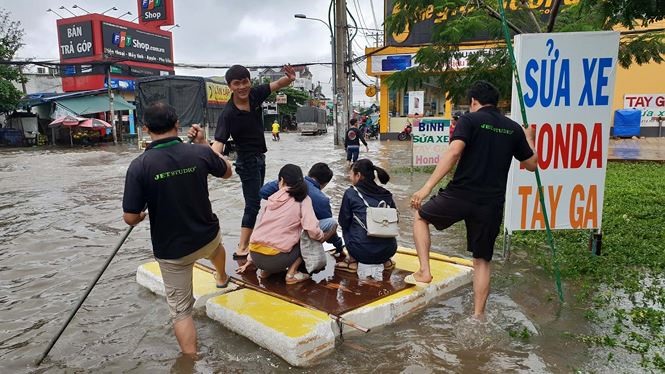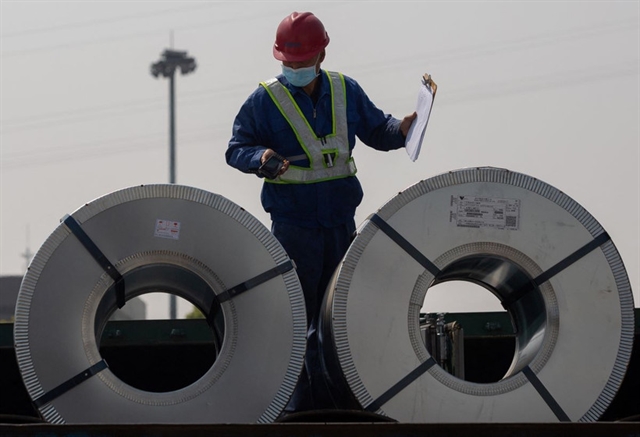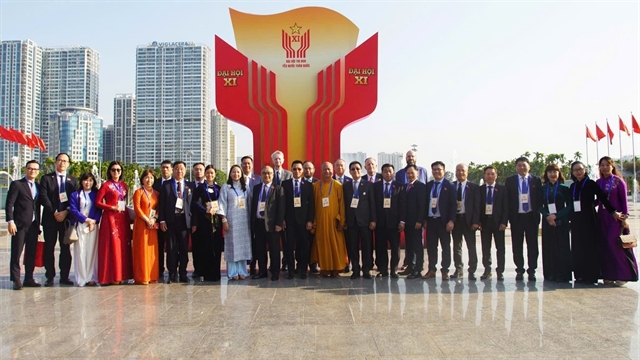 Society
Society

Hồ Chí Minh city needs up to VNĐ73 trillion (US$$3.15 billion) for flood prevention projects by 2020, according to its Department of Planning and Investment.
 |
| Hồ Chí Minh city needs up to VNĐ73 trillion (US$3.15 billion) for flood prevention projects by 2020, according to its Department of Planning and Investment.— Photo saigontimes.vn |
HCM CITY — Hồ Chí Minh city needs up to VNĐ73 trillion (US$3.15 billion) for flood prevention projects by 2020, according to its Department of Planning and Investment.
VNĐ16 trillion will come from the city’s budget, VNĐ588 billion from the central Government budget, VNĐ20.2 trillion ($868 million) from private sources and VNĐ36 trillion ($1.5 billion) from official development assistance (ODA).
The figures were revealed last week during a seminar to find solutions for the flood management system, which is currently at the edge of its capacity.
During the rainy season residents are confronted with flooding in the low lying areas and also in the central districts. The problems occur between August and December; at spring tide twice a month for several days in a row, twice each day. The main causes of flooding are high tide, heavy rain and high discharge from Sài Gòn and Đồng Nai.
The floods have been intensified by sinking grounds and inadequate drainage systems amid rapid urbanisation, according to local experts.
The flooding causes inconvenience and damage and needs a swift solution, experts say.
According to Lê Văn Thành, a specialist from the city’s Institute for Research and Development, in rainy season, about two thirds of the city’s area are inundated, badly affecting living quality and economy. It costs the city some VNĐ1.5 trillion ($66 million) each year in losses due to flooding, he said.
Đỗ Tấn Long from the Anti-flood Centre said in the last few years, the city had implemented anti-flood projects in the central area, 550 square kilometres large. In the future, the capital will be arranged to implement the projects in the suburbs.
Long said the HCMC Transport Department has recently drawn up an anti-flood project with the most updated input data.
The department, together with the agriculture department, has been assigned by the municipal authorities to check and adjust programmes 752 and 1547 to fit the new socio-economic development conditions.
Long said the city is beefing up the improvement work of Tham Lương- Bến Cát and Nước Lên canal with the length of 32km for better irrigation and urban renewal of 14,500 ha basin.
The city will also dredge Xuyên Tâm canal with the length of 8.2km for urban renewal of 703ha.
Additionally, the city will build 76 culverts to control tidal inundation, seven to eight embankments around Sài Gòn river bank and 12km dykes in the opposite bank of Saigon river as well as dredge major drainage system in canals.
Some experts said that construction of dykes and drainage system is not enough.
Nguyễn Trọng Dần emphasised the effectiveness of pumping.
“With low lying areas which are affected by high tides like HCM City, setting up a proper planning of sewer system, using reservoirs and pumping systems are the principle solutions,” he said.
He cited the case of the massive water pumps used on Nguyễn Hữu Cảnh Street in Bình Thạnh District.
Other measures should be implemented at the same time, but using pumps for certain flooded streets could help deal with inundation in these flood-prone areas, he said.
Other solutions suggested by experts include replacing current culverts by new larger ones and deploy valve with pump stations, raising people’s awareness about waste dumping and speeding up work of waste treatment plant. — VNS




